Have you ever been curious about life at the turn of the 20th century, and specifically what it looked like for a vintage housewife? Come along and explore the history of homemaking!
Image by Library of Congress
Vintage Housewife: Life at the Turn of the 20th Century
I thought it would be interesting to learn more about vintage housewives and discover what their day to day lives looked like throughout the decades. This is the first part in a series that will explore what life was like for vintage housewives and farmwives.
See Also:
What Was Life Like for the 1920s Housewife?
1930s Housewife: Life During the Great Depression
Wartime Wife: Life for the 1940s Housewife
While it is easy to romanticize the past, I hope that we can take a practical look at the day to day life of the vintage housewife during this era.
This article will take a closer look at life at the turn of the 20th century, as life transitioned from the late 1800s and into the early 1900s.
Transitioning Out of the Victorian Era
The transition out of the Victorian era was a very interesting time. During the Victorian age, the culture revered the role of the wife and mother. She was seen as fulfilling a God given role as the keeper of the home.
The home was to be a haven and shelter from the world. As such, the woman of the home was the guardian of moral purity and her role was highly valued because of the influence she had upon the next generation.
Essentially, the woman as wife, mother, and homemaker was a revered role in the Victorian world. But even with this hallowed position, there was plenty of work that kept the Victorian housewife busy.
Image by Library of Congress
Victorian Housework
In the Victorian era, housework had an efficiency and scientific quality to it. It is likely that most households followed a weekly schedule similar to this:
Monday: Laundry day
Tuesday: Ironing and Mending
Wednesday: Baking
Thursday: Thorough cleaning of the house
Friday: Tidying kitchen and parlor
Saturday: Baking and Thorough cleaning of the house
In addition to these regular duties, there was also child rearing, cooking meals, hauling water, making family garments, gardening, harvesting, preserving food, and livestock care to consider.
Women’s Health
With all of this work, women were prone to illnesses brought on by the stress of work. The work load could be simply exhausting and mentally draining. This sometimes led to sickness and a decline in health. Nervous disorders were also commonly seen due to the stress of the work load.
The clothing that women wore during this time period was not the most practical. It was made from heavy fabric and the use of corsets was common. Corsets came with their own host of problems that sometimes led to poor health for women.
Image by Library of Congress
Industrialization and Consumerism
As time moved on from the 1800s and into the 1900s, there was a lot of societal change that happened. One large shift is that the culture transitioned from being a society of producers to one of consumers.
The growth of technology during this time period allowed for mass production, which meant people no longer had to make absolutely everything by hand.
Conveniences were brought into the life of women. Things such as sewing machines and wood fired cooking stoves (rather than actual wood fires for cooking).
These items were marketed through catalogs from companies such as Sears and Montgomery Ward. Which meant that even people who lived in rural areas could find out what the latest and greatest techonology was. And they could even order items from the catalog to be delivered through the mail.
While new machines were being invented and the rural population technically had access to these machines through the mail order catalogs, the new technology still took a long time to make its way out to rural areas. Which meant that people, horses, and oxen still completed most of the work.
Farmwife Life in the Early 1900s
In 1900, over half the population lived in rural areas. Even though industrialization was happening in urban areas during this time period, life in rural areas remained more challenging with no access to electricity and plumbing.
Most families farmed for subsistence and sold off surplus farm products to earn a little bit of income.
Image by Library of Congress
I came across a primary document written by a farmwife in 1900. It provides quite a bit of insight into what life looked like for a farmwife of that era.
Typical Day of a Farmwife
This farmwife rises at 4:00 in the morning and dresses and then gets the fire started in the kitchen stove. She then takes a trip to the garden and cuts a few flowers to put in her hair, then she returns to the kitchen to sweep the floors and prepare breakfast.
While her family eats breakfast she strains the milk (her husband milks the cow) and makes a dinner pail for her husband to eat as he works in the field.
By 5:30 AM her husband is off to work on a farm away from their place. That means the farmwife is in charge of the livestock at their farm.
She sets to work and releases a menagerie of animals out to pasture, including cows, calves, a horse, pigs, sheep, and chickens. She also takes water to them, which for some of the animals, requires hauling water a good distance.
Image by Library of Congress
Another hour has passed, it is now 6:30 AM. She returns to the house to make beds and straighten up the living room. She says she does not like “…to have the early morning caller find [her] house topsy-turvy.”
She still has not eaten breakfast and feels that she does not have time to spare to sit down and eat. So she sets out some food in the kitchen and grabs a bite here and there as she passes through and completes her housework.
At 7:15 AM she mourns that “…the cool hours of the morning have flown and no hoeing done in the garden yet.” She sets herself to churning the milk and tending to getting her children ready for the day.
By 8:00 AM those tasks have been completed and she finally sets out to do the hoeing, which she works on until 11:30 AM. It is now the dinner hour so she and the children go inside and eat a cold dinner.
During this time she also combs her hair and and puts fresh flowers in her hair.
During the dinner hour she also feeds and waters the chickens and sweeps the floor of the house. She then sits down to rest and read for a few minutes.
Image by Library of Congress
By 1:00 PM she is back outside, working in the garden. She plans to work in the garden until it is time for night chores, but she is pulled away from that task when she discovers the cows took down the fence and are running loose, along with the pigs.
With some difficulty, she gets the runaway livestock back where they belong and repairs the fence. She returns to her hoeing and works on it until 4:00 PM.
At that time she goes inside to prepare supper. When she is done with making supper, she sets back to work. She nonchalantly says:
“…I pull a few hundred plants of tomato, sweet potato or cabbage for transplanting, set them in a cool, moist place where they will not wilt, and I then go after the horse, water him, and put him in the barn; call the sheep and house them, and go after the cows and milk them, feed the hogs, put down hay for three horses, and put oats and corn in their troughs, and set those plants and come in and fasten up the chickens, and it is dark.”
Though it is dark, her job is not yet done for the day. By 8:00 PM her husband comes home and they eat supper. She then makes up the beds for the night so that her husband and children can go to bed.
After that she does the dishes and sets things up so she can make a quick breakfast the next morning. At 9:00 PM she says a quick prayer and then goes to bed. All to wake up in the morning and repeat again.
Farmwife Observations
When I read this account of what a typical day looks like for this woman, I was amazed at the amount of work that she accomplished in a day!
With such an early rising time, this woman had so many productive hours in her day. I also found it interesting that her tasks had quite a variety to them. She does not merely focus on housework, but is also strongly involved with the livestock and gardening.
All of those tasks are very physical in nature. And having dealt with my fair share of unruly livestock, I am amazed at her ability to handle so much on her own while her husband is away. I think this women exhibits great stamina.
My favorite part of this account is that she takes the time twice a day to cut fresh flowers to adorn her hair. I imagine that with the sheer amount of work, and the physical nature of it, that it would be easy to ignore such a thing. But I love that she pauses to do this.
Conclusion
Life for the vintage housewife at the turn of the 20th century was filled with change. But even with these changes and a move towards industrialization, life was still quite challenging for many women. This was especially true for rural women, who had less access to the newer technology of that day and age.
With such challenges to face day after day, some women suffered physically and mentally with the demands of their daily tasks.
There is no doubt that this generation of vintage housewives were extremely hard workers. They put in many hours of arduous work day in and day out, and they deserve much respect for all that they accomplished.
What did you find most interesting about the life of a vintage housewife at the turn of the century? Share in the comments below!
Other Articles in the Series:
What Was Life Like for the 1920s Housewife?
1930s Housewife: Life During the Great Depression
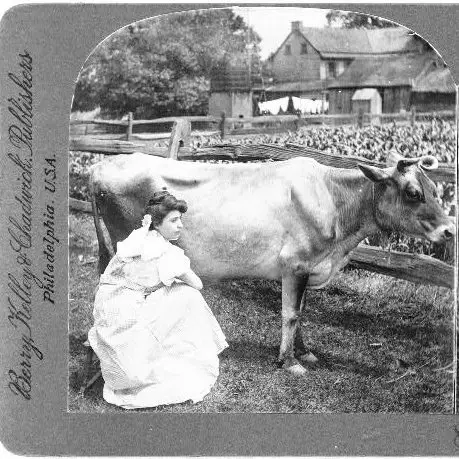
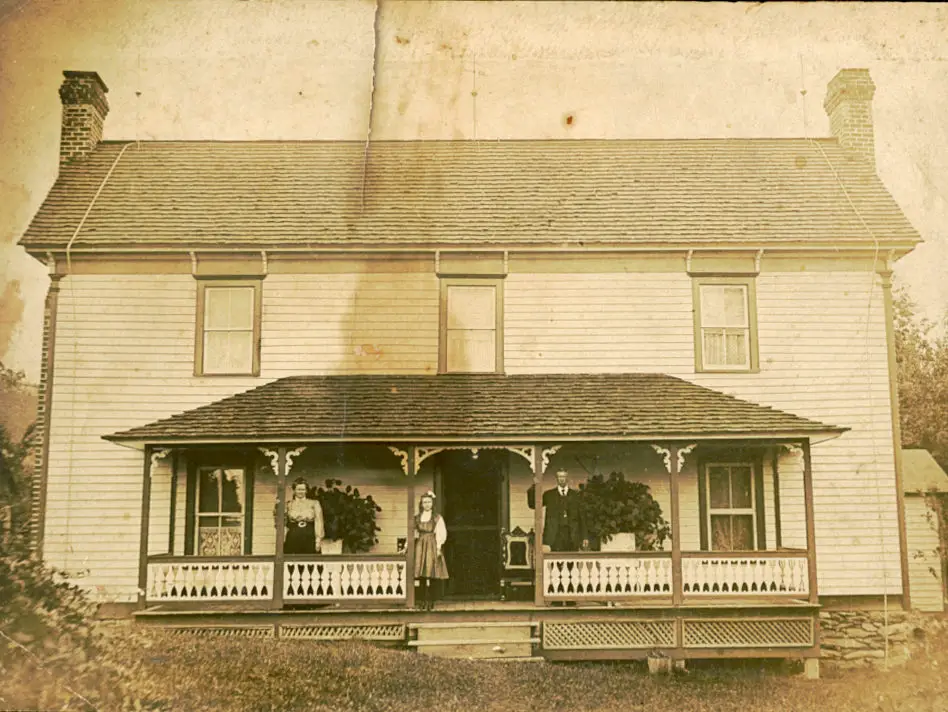
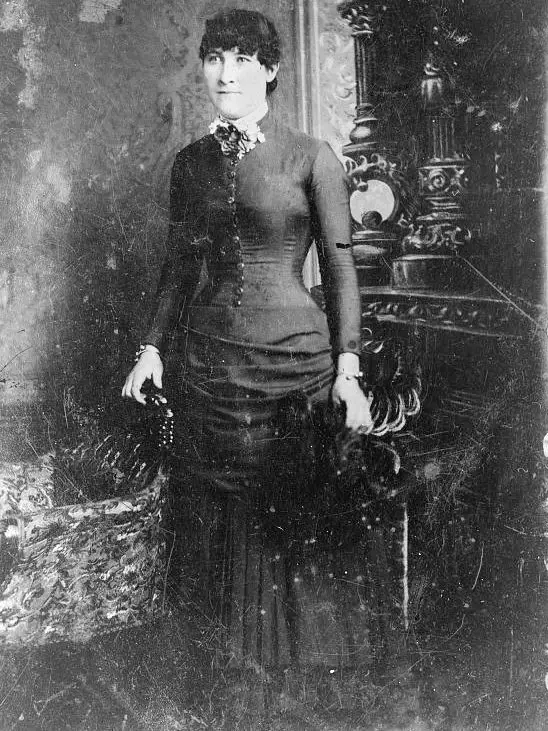
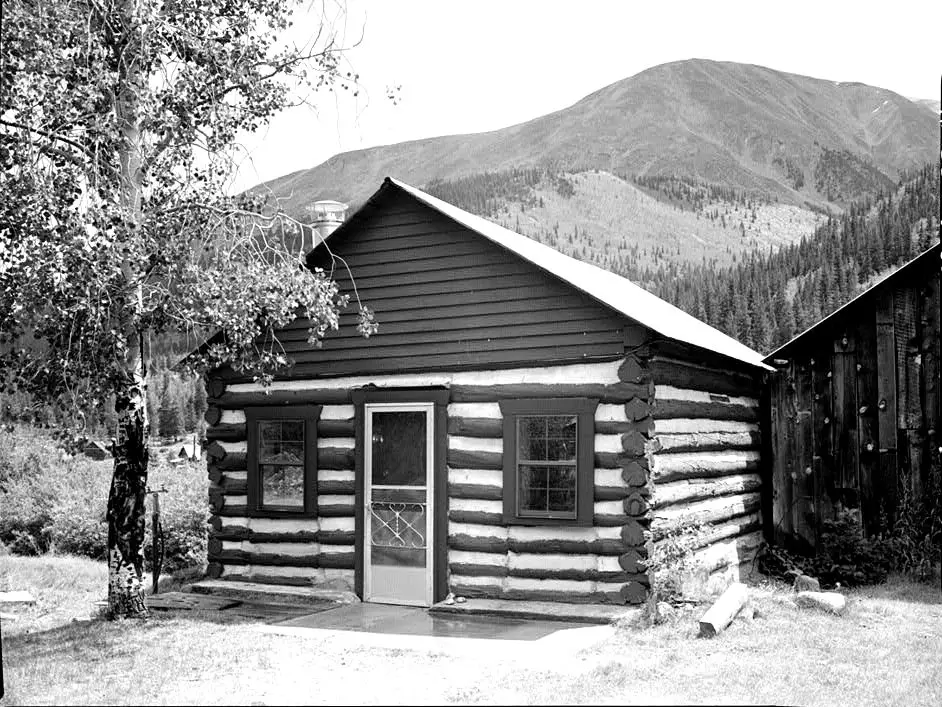
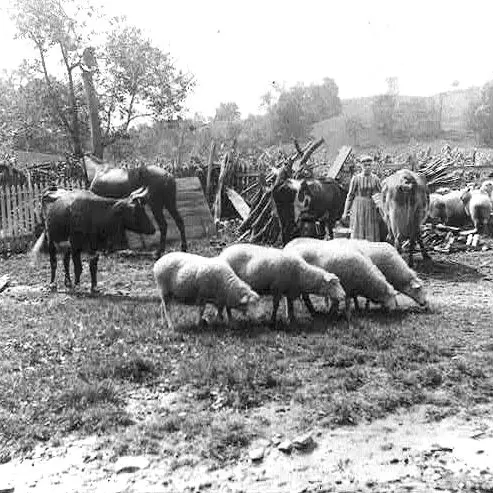
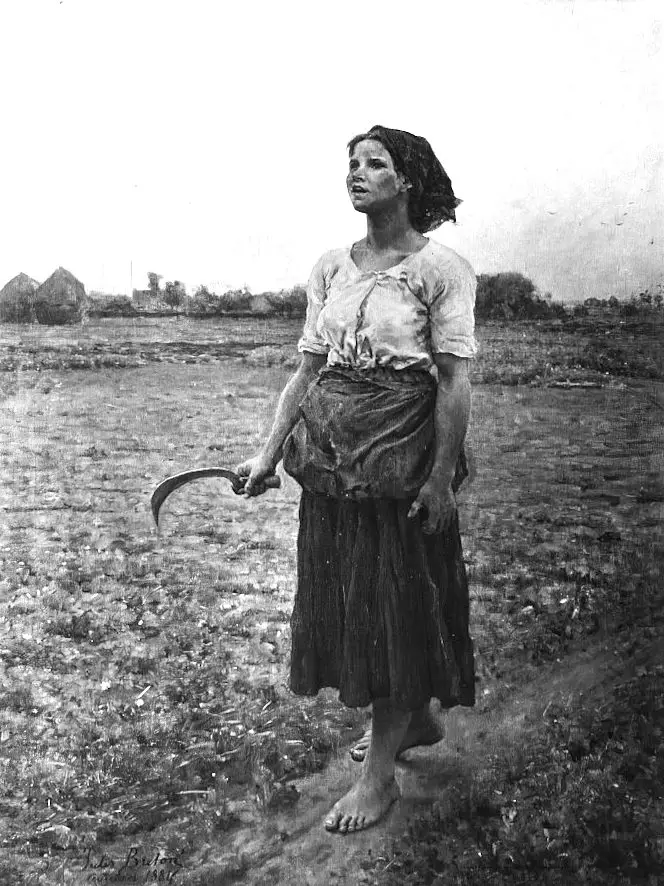
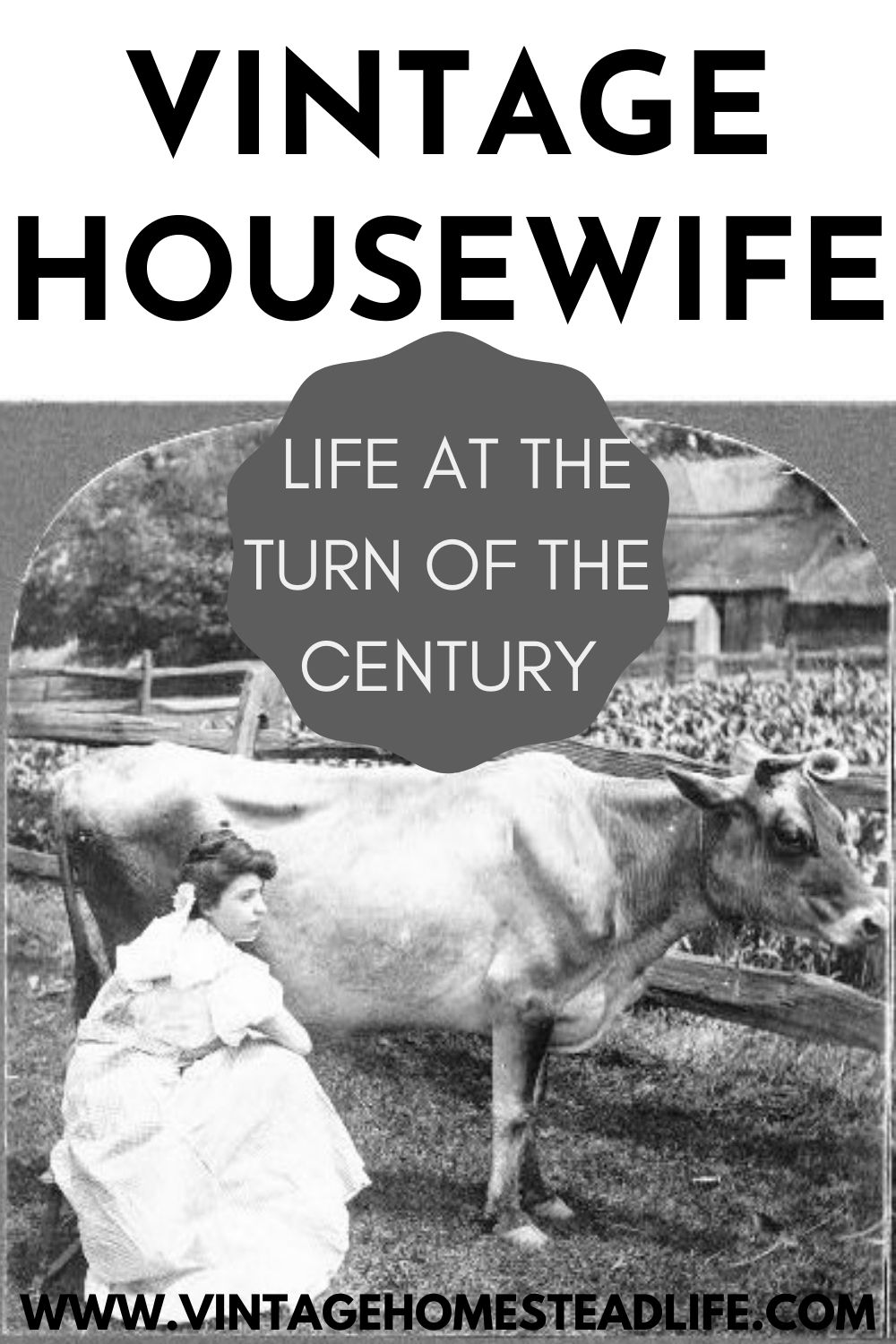

Wow, what a lifestyle! I think even those of us who prioritize simple living and making things from scratch still take for granted so many modern conveniences. It’s quite eye-opening to read a real farm wife’s account of her daily schedule, from the age which seems “ideal” in so many ways.
Yes, it really is an amazing account! I have so much respect for this woman. Even today I think there is the impression that living a simple life on a homestead is idealic. But the reality is that it is hard and filled with its own challenges. It may be a different kind of hard than what most people face, but it defintely is not an easy life. But even so, it is a good life!
I love how you addressed the good and the bad in this post. Much like you, the hard work and thr women’s desire to still be beautiful in the midst of her labor stood out to me. Lovely read!
Thank you! I am glad you enjoyed it.
I loved this article! I grew up without indoor plumbing, hauled 2 buckets of water at least 3 times a day, mom baked almost 1 a week and weekends – no store bought treats for us! The 4 of us shared a room, boy I could go on! And we didn’t have a car lol…..Those are just some of my memories growing up rural
Thank you!
I love hearing about your memories! Thank you for sharing them.
This is an account of my grandmother who was born in 1904 and married at 16. She had her first child at age 17 and the following two were less than two years apart. My husband and I now own the homestead where my grandparents lived from 1930-1942. My two aunts and my daddy were born there. We are renovating the ole house which will be 100 years old this year and so many questions come to my mind as we make decisions on paint, fixtures, etc. since none of these would have been available/affordable then.